Bathat every year becomes more and more popular. Some gardeners who have just begun to master the peculiarities of growing this culture claim that the batt is like a potato, only sweet. In fact, there are several varieties of the battoo that can be raised in the country area, observing certain rules.
In China, the Batat is called vegetable longevity and beauty, because in the tubers of this plant contains vitamins, minerals, acids.
Description of Batata.
The birthplace of this utility vegetable is considered to be Peru and Colombia. Over time, the batt spread throughout the world and is currently being cultivated in countries with a warm climate. Country-leaders in the cultivation of this garden culture are China, India, Indonesia. Residents of these countries are awe relate to the battoo, because they consider it a healing vegetable, delivering from many ailments and renewing youth.
What is a batt? Externally, the clubs are similar to our potatoes, but it differs in taste. Most likely, the batt is more like a common pumpkin, only sweet.
Sweet potato. What is this plant? This is an annual environmental plant with long, grinding stems. The length of the stem reaches up to 3 m, and the height of the adult bush is only 20 cm.
Surprisingly, but the batt grows in the same way as the Ipomea (or Binds). The same leaves, the same flowers. Even an experienced specialist may not immediately distinguish, the batt is or rhodain - binders.
In the homeland, in the tropics and subtropics, the batt can be called long-term Liana, it reaches in growth up to 5 m, it grips on the ground, rises, if there is a support. But mostly steals on the ground, launching additional processes.
It is very important that Liana or Batat is an unpretentious culture and practically does not need to care, is not demanding to watering. If there was no precipitation for a month and the summer was arid, then Liana is watered so as not to miss the formation of tubers.
Batata varieties
Batat is divided into such types:
- Feed Batt. No sweet vegetable.
- Vegetable Batt. It's not a lot of sugar.
- The bait dessert is delicious, sweet.
There are many varieties of a bathata, but only a few deserve attention, as they can be raised in the middle lane of Russia:
- betat beige "American". Battom leaves have a form three-sufficient, sweetish fruits. To taste and externally, this variety is as close as possible to ordinary potatoes;
- bathat "White", this variety was specifically derived for cultivation in Russia. Vegetable light shade, pulp almost white. Taste - like an elite variety of potatoes, so often cooking replace starch potatoes on a more useful tract of this variety. Ripens quickly, gives a good harvest;
- the Boregard variety was led in the United States, it is characterized by the fact that the plant is very resistant to the attack of pests and diseases. Gives an excellent harvest, when ripening does not crack. This is a ripper grade, has a light pink peel, flesh - a light orange shade. Taste - Sweet in moderation;
- the "Manchenian" grade is ideal for growing in the country area, when each centimeter of the Earth for gold weight. It grows compactly, distinguished by high yield. Peel can be pink or red, and the pulp is yellow, bright. Taste - Sweet, rich;
- the Bathat variety "Red Ginseng" - externally practically no different from ordinary potatoes, the same white-pink tubers, only the pulp is yellowish and sweetish.
China is grown more than a hundred varieties of the batta, but all the names cannot be listed, since they simply do not exist. The difference is only in the appointment (stern, dessert, etc.), as well as on external signs. Some varieties have red color, some white and even orange. The flesh - can also be a different shade, from white to ... purple! The form is mostly spherical, but there are varieties, externally resembling all of us familiar vegetables: carrots and tomatoes.
Where the batt grows: on solar, well-lit areas. Soil prefers lungs or drylies, it does not stand up if the groundwater is sometimes closed. The easiest to grow sweet potatoes in the southern regions of Russia, but also in the north-west, some varieties can also give a good harvest.
How to grow Batat
The cultivation of the battle is not a challenge, the process is so fascinating that I also want to try again to reproduce the new varieties of this utility plant. The seeds of the batte is difficult to find on sale, because mostly this plant is breeding with stalling, from ripe tubers and only occasionally - through seedlings.
Before learning to study the most important issue, it will have to take care of all in advance - to choose a well-lit place in the country area. The soil should be feasting or fertile loam. The peroxide is obligatory before landing by 20 cm. But, in no case, no more, then the roots will deepen and will be long and thin. With this situation, the yield decreases.
In the autumn period, perplex and additives are required: compost (no more than 6 kg), manure (sufficient 3 kg), potassium sulfate (no more than 15 g) and superphosphate (no less than 20 g) per square meter.
Features of growing sweet potatoes. In plants, consonant names and external similarities, but on this everything ends. The tubers are not accepted. Due to a long period of vegetation, they will not have time to form. Therefore, when the batt is reproduced only a seaside method.
This is important: if you order a plant through online stores, remember that the planting material does not withstand the temperature, lower than +10 degrees. Therefore, it is better to take care of everything before the onset of cold. This concerns the tubers, and the cuttings are not afraid of the cold, so in the cold season you can also try to multiply the sweet potatoes with cuttings of the bat.
Grow the batt at home. Sequence of work:
- If a plot is small enough for a sample to purchase 3-5 tubers.
- Prepare a box with a 20 cm high, make the bottom of the hole.
- It will take the pallet on which the box will stand and light warm windowsill.
- Prepare a fertile mixture of loose soil 1 part, sand large and humus (in equal parts). All components need to mix and fall asleep in the box. Approximately the half of the drawer. On top of glue grain sand, layer 5 cm.
- Before starting landing, the bought tubers must be processed. Disinfection is carried out in a solution of copper vapor. Prepare a weak solution.
- After exposure for a few seconds, the tubers need to be removed from the solution and put into the substrate, slightly press, and on top of sprinkle with sand. Sand Take a large, layer no more than 3 cm.
- To achieve speedy germination, the room temperature should not be descended lower than +18 degrees and rise higher than +27 degrees.
- Watering is moderate, regular.
- If everything is done according to plan, then the first seedlings should be expected approximately 3-5 weeks.
- As soon as the sprouts have achieved in growth of 10 cm, there will be interstice (from 4 to 6 pcs), you can separate the treens cuttings and put them in a jar with water / in a pot with a soil / greenhouse so that they will be laid roots.
- Landing in the ground - warm spring so that the air temperature warms up to 14 degrees, and frosts retreated.
- It is necessary to pretend to harden the sprouts - for 2 weeks, the sprouts must be taken out to open air, leave in the sun for a couple of hours.
- The site was supposed to be deprived of a strong wind, the soil was prepared from the autumn. In the spring you only need to explode a bed before planking, help Selutyra.
- Planting a battery: Make small wells, with a step of 25 cm. The distance between the rows is 50 cm. Some varieties of sweet potatoes require a little more gap. Well do not deep, sprouts deepen at 7 cm maximum, after landing, be sure to cover with the film, since the spring weather is still unstable.
Palming Batt
To assemble the harvest, you need to maintain the optimum temperature for the growth of this culture. If summer was hot, then the crop will be excellent.
Watering: When the cuttings are only rooted, watering is abundant, and after the growing season - moderate. For 20 days before the harvest assembly, watering must be stopped at all.
As for the supply of nutritional mixes - Batat, this is a culture that literally pulls out everything that she needs. As a rule, the feeding must be abundant. Potassium in the soil must be necessarily.
Fertilization time: The first half of August is 1 time in 7-10 days, you can make potassium, and also insist on water wood ash or purchase special mixes in the store.
Starting from the second half of August, approximately 20 years, the tops of the plant must be discharged to get a larger tuber.
When digging the batt
Digging the harvest is not before mid-September, but before the onset of frosts. If the autumn is warm, you can wait for the end of October, then tubers will be kept longer.
Shower - only when warm and dry on the street. If raw and rainy, then tubers will ruin faster. For storage, they are unsuitable, then they are easier to recycle or give them pet.
Since we grow a batt not in the tropics, then on the tuber, we can not count on the tubers. But the harvest, weighing from 200 to 400 g and even more - a big luck!
Diseases and pests are not scary, but this does not mean that plants do not need to be protected. For example, from rodents, crumbling and slugs, they do not mind to enjoy tasty sweet bathata fruits. To prevent such a multiple processing of the plant with a plants from the colorado beetle.



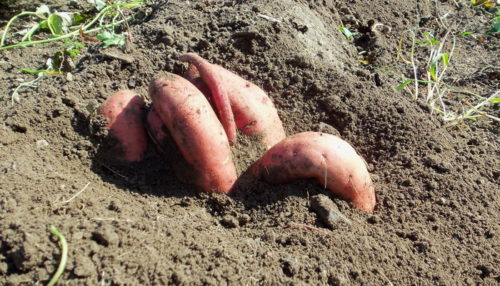
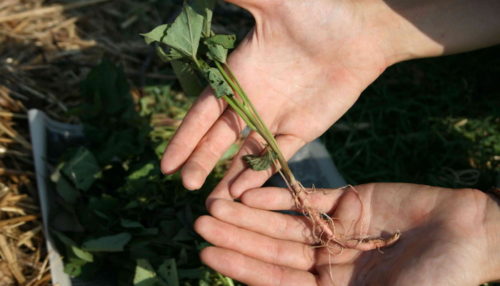

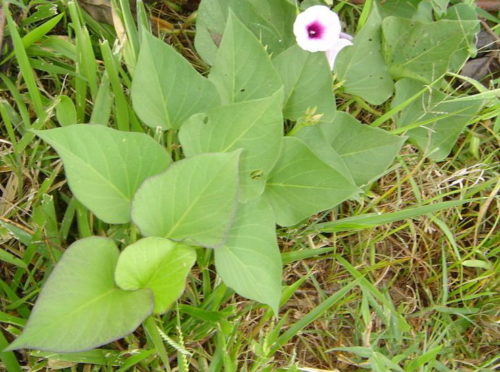

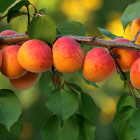


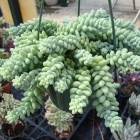
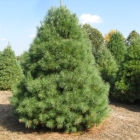
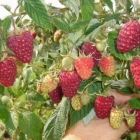
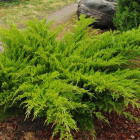

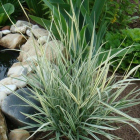
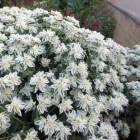
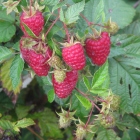

 Start a discussion ...
Start a discussion ...